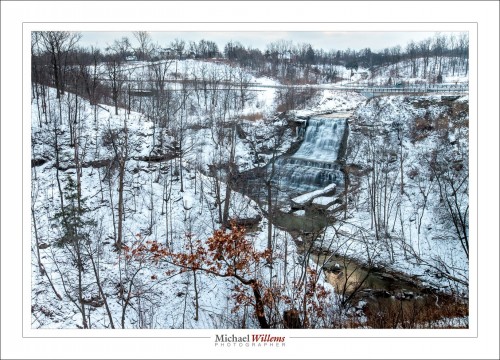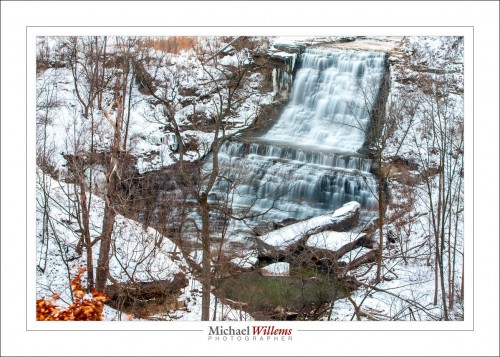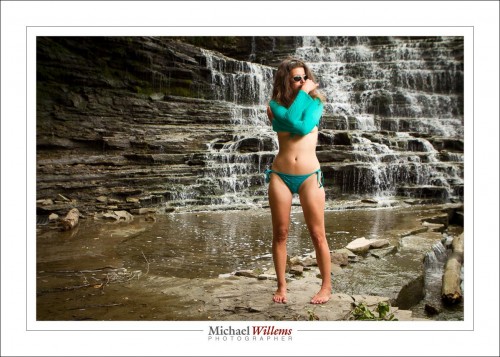I was going to shoot some waterfall pictures yesterday. Alas: one park (Hilton Falls in Milton, Ontario) had its trails closed because of downed power lines and trees (which I discovered after paying the $14 fee, thanks, Halton Conservation), and the other waterfall, Albion Falls in Hamilton, Ontario, had its access routes closed also, but permanently, because of the danger. I had wide angle pictures in mind, but from above, which is all I could get to, they are not what I wanted, exactly. You will forgive me for that and just look at Albion Falls:
Imagine it is about minus infinity Celsius (a wicked cold wind, plus way below freezing), which is why my companion and I took only a few shots. Groan, that was freezing. I had to stop when my ears froze – literally, I felt ice inside my ear.
Now, the shot. How did I decide on settings?
I wanted a slow shutter, so I started with 100 ISO and f/16. I try to avoid apertures smaller than f/16: any larger f-number and the images tend to get a little less sharp. That would have given me a shutter speed of perhaps around a second at most: not long enough. So I used the variable ND filter, set to a dark setting, to get to 20 seconds.
And on the long lens, the 70-200, I used a polarizer, since it is all I had. That cut almost two stops from teh light, so I got to 5 seconds. Here’s one taken with that long lens:
(See the large version on my Flickr stream).
What do you need to watch out for when doing these shots: Mainly, motion.
- Avoid moving the camera while pressing the shutter. This is worse with shutter speeds between, say, 1/15th and 2 seconds (shorter and there is no time for camera shake; longer and the little shaking will disappear compared to the rest of the exposure).
- I had a tripod, of course, but it was too cold to go back to the car to get the sandbag I would have liked to hang from the bottom to stabilize it. So the tripod moved just a tad in the strong wind. This is worse with longer lenses, and much less noticeable with a wide angle lens.
- The viewing platform itself moved a little, leading to a little shake too.
- And finally: trees move in the wind over the course of a long exposure.
So of my ten pictures, three were good and sharp. Which is about what I had hoped for. Keep this in mind when shooting waterfall pictures!
And finally, here is a model shot at the same waterfall, from 2012. Just so you seee Canada is not always cold.
I cannot wait until it is summer again.
___
Camera technique? Composition? Flash techniques? Specific situations? I explain it all in my e-books. PDF files for viewing on computer, phone or tablet. Get them here.



